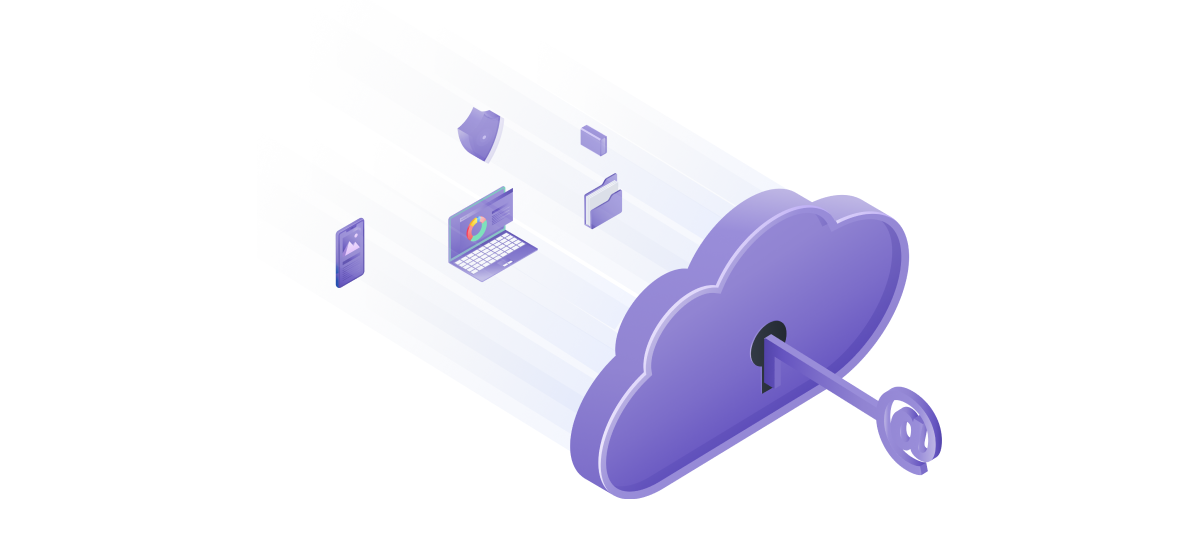Avoiding Common Cloud Implementation Pitfalls
Cloud computing has revolutionized how businesses operate, offering scalability, flexibility, and cost-efficiency. However, adopting cloud technologies can present various challenges that may hinder organizations from fully realizing the benefits of this transformative technology.
In this article, we will explore common challenges in cloud adoption and how specialized teams that focus only on cloud integrations can help businesses navigate the whole process more successfully.
Challenge 1: Lack of Expertise and Skills
One of the primary challenges businesses face when adopting cloud technologies is the lack of in-house expertise and skills. Cloud platforms require specialized knowledge and experience to design, deploy, and manage effectively. Without the right skills, organizations may struggle to make informed decisions, leading to suboptimal implementations and missed opportunities.
A lack of in-house expertise and skills is a significant hurdle for companies embarking on cloud adoption. Cloud technologies constantly evolve, with new services, features, and best practices emerging regularly. Keeping up with this rapid pace of innovation requires dedicated resources and continuous learning.
Why do organizations have problems finding talent? Well, in the last couple of years, the demand for cloud professionals has often outpaced the supply. Skilled cloud architects, engineers, and developers are in high demand, making it difficult for both small and bigger companies to attract and retain the right talent.
With cloud platforms offering a wide range of services, each with its own intricacies and best practices, gaining expertise across multiple cloud domains, such as infrastructure, security, and data management, requires significant time and effort.
Companies that want to build an in-house cloud expertise team require substantial investments in training, certifications, and hands-on experience. Many may find it challenging to allocate the time and resources needed to upskill their existing staff while simultaneously managing day-to-day operations and business priorities.
Finally, without the right expertise, organizations may make uninformed decisions during the cloud adoption process. This can lead to suboptimal architectures, inefficient resource utilization, and missed opportunities to leverage the full potential of cloud technologies. Wrong decisions can result in performance issues, security vulnerabilities, and increased costs, and with a team of experts with loads of previous experience, your software is in the right hands.
Solution:
Cloud Implementation Services providers offer a team of certified cloud experts who possess deep knowledge and hands-on experience in various cloud platforms such as Amazon Web Services (AWS), Microsoft Azure, and Google Cloud Platform (GCP). These professionals can guide businesses through the entire cloud adoption journey, from assessment and planning to deployment and ongoing management. They bring industry best practices and insights to ensure a smooth and successful transition to the cloud.

Challenge 2: Complex Migration Process
Migrating existing applications and data to the cloud can be a complex and time-consuming process. It involves careful planning, assessment of dependencies, and consideration of compatibility issues. Organizations may face challenges in determining the right migration strategy, ensuring data integrity, and minimizing downtime during the transition.
Not all applications are cloud-ready or compatible with cloud architectures. Legacy applications may have dependencies on specific hardware, operating systems, or software components that are not easily replicated in the cloud. We advise clients to thoroughly assess the compatibility of their applications and determine the necessary modifications or refactoring required to make them cloud-compatible.
Migrating large volumes of data to the cloud can be time-consuming and prone to errors as it must ensure data integrity during the migration process, maintaining the accuracy, consistency, and completeness of data. Every business needs to consider factors such as data formats, schemas, and dependencies to ensure a smooth and reliable data migration.
Today, many applications experience performance and latency issues when migrated to the cloud, especially if they are not optimized for cloud environments. Understanding the performance requirements of the applications helps our clients ensure that the chosen cloud infrastructure can meet those requirements.
When it comes to security and compliance, migrating applications and data to the cloud introduces new security and compliance challenges. By implementing appropriate security controls, such as encryption, access controls, and monitoring, to protect sensitive data and prevent unauthorized access, every business can rest assured that they have complete control over their data.
With all this in mind, migration to the cloud requires specific skills and knowledge. As companies face skill gaps within their in-house teams it makes it challenging to plan and execute the migration effectively. The learning curve associated with cloud technologies and migration processes can also slow down the migration timeline and increase the risk of errors. And that’s where working with experienced third-party providers can make a big difference.
Solution:
To help clients who are battling these types of problems, cloud services providers offer comprehensive migration services to simplify and streamline the process. After conducting thorough assessments to evaluate the readiness of applications and data for cloud migration, skilled teams can develop detailed migration plans, considering factors such as application dependencies, data sensitivity, and compliance requirements.
 Challenge 3: Security and Compliance Concerns
Challenge 3: Security and Compliance Concerns
Security and compliance are critical considerations when adopting cloud technologies as company data and applications are protected against unauthorized access, breaches, and cyber threats. Compliance with industry-specific regulations such as HIPAA, GDPR, or PCI-DSS adds another layer of complexity. The cloud introduces new security challenges and compliance requirements that must be carefully addressed to protect sensitive data, maintain customer trust, and avoid legal and financial repercussions.
One of the primary security challenges in the cloud is ensuring the protection and privacy of sensitive data. We advise companies to implement strong security controls to prevent unauthorized access, data breaches, and data loss. This includes encrypting data at rest and in transit, implementing access controls and authentication mechanisms, and monitoring data access and usage.
Cloud security normally operates under a shared responsibility model, where the cloud provider is responsible for securing the underlying infrastructure, while the organization is responsible for securing their applications, data, and access management. Organizations must clearly understand their security responsibilities and ensure they have the necessary controls and processes in place to meet those responsibilities.
As many industries are subject to specific regulations and standards that govern the handling and protection of sensitive data, compliance with regulations such as HIPAA (Health Insurance Portability and Accountability Act) for healthcare, GDPR (General Data Protection Regulation) for data privacy, or PCI-DSS (Payment Card Industry Data Security Standard) for financial transactions adds a new layer of complexity to cloud adoption.
Lately, the cloud environment has become a larger attack surface by offering a number of potential entry points for cyber threats. Robust security monitoring and incident response capabilities to detect and respond to security incidents promptly are a must and it includes implementing:
- security information and event management (SIEM) solutions
- intrusion detection and prevention systems (IDPS)
- establishing incident response plans and procedures.
Managing user identities and access permissions in the cloud is crucial for maintaining security, especially through strong IAM practices, including role-based access control (RBAC), multi-factor authentication (MFA), and regular access reviews. Ensuring that users have the least privileges necessary to perform their tasks helps minimize the risk of unauthorized access and data breaches.
Finally, cloud adoption often involves relying on third-party services and integrations. That’s why companies must assess the security and compliance posture of these third parties and ensure that they meet the required security standards. This includes conducting vendor risk assessments, reviewing service level agreements (SLAs), and monitoring the security practices of every third-party provider they plan to work with.
Solution:
Reliable providers will always prioritize security and compliance throughout the cloud adoption process. They implement robust security measures, including encryption, access controls, and network segmentation, to safeguard data and applications.
The experienced teams offer assistance in achieving compliance with relevant regulations by providing guidance on data protection, privacy, and governance. These experts stay up-to-date with the latest security best practices and regulatory requirements, ensuring that businesses remain secure and compliant in the cloud.
 Ready for Cloud Adoption?
Ready for Cloud Adoption?
Cloud adoption presents significant opportunities for businesses to transform and innovate, but it also comes with challenges. Specialized Cloud Implementation Services providers play a crucial role in helping small, medium, and large companies navigate these challenges successfully.
By leveraging expertise, proven methodologies, and best practices, businesses can overcome obstacles in cloud implementation, mitigate risks, and unlock the full potential of cloud computing. With the right partner and approach, any company can confidently embark on their cloud journey and achieve their desired outcomes.


 Challenge 3: Security and Compliance Concerns
Challenge 3: Security and Compliance Concerns Ready for Cloud Adoption?
Ready for Cloud Adoption?






















Leave a Reply